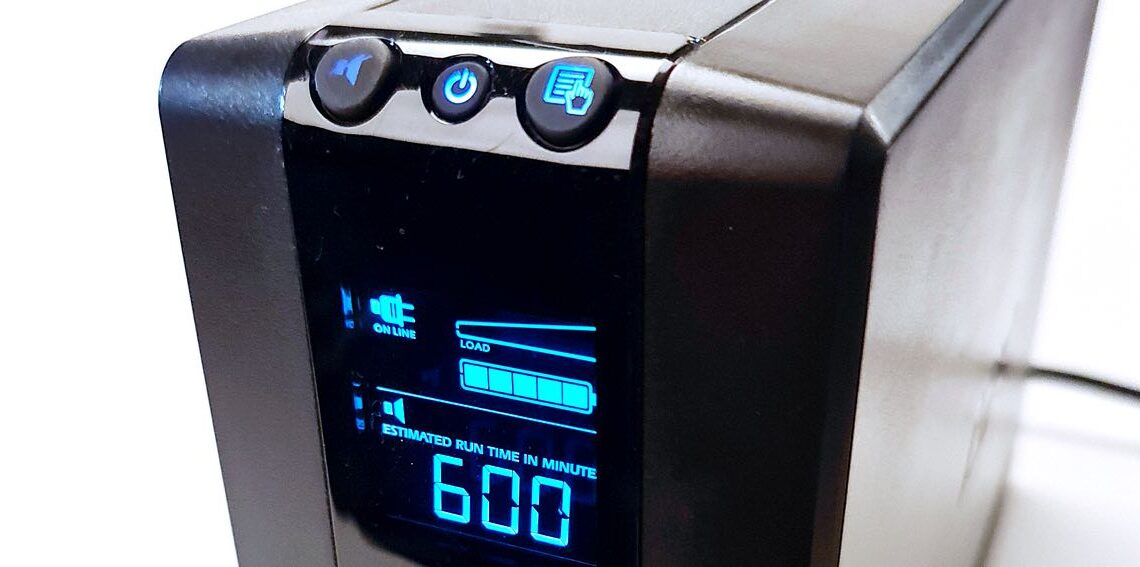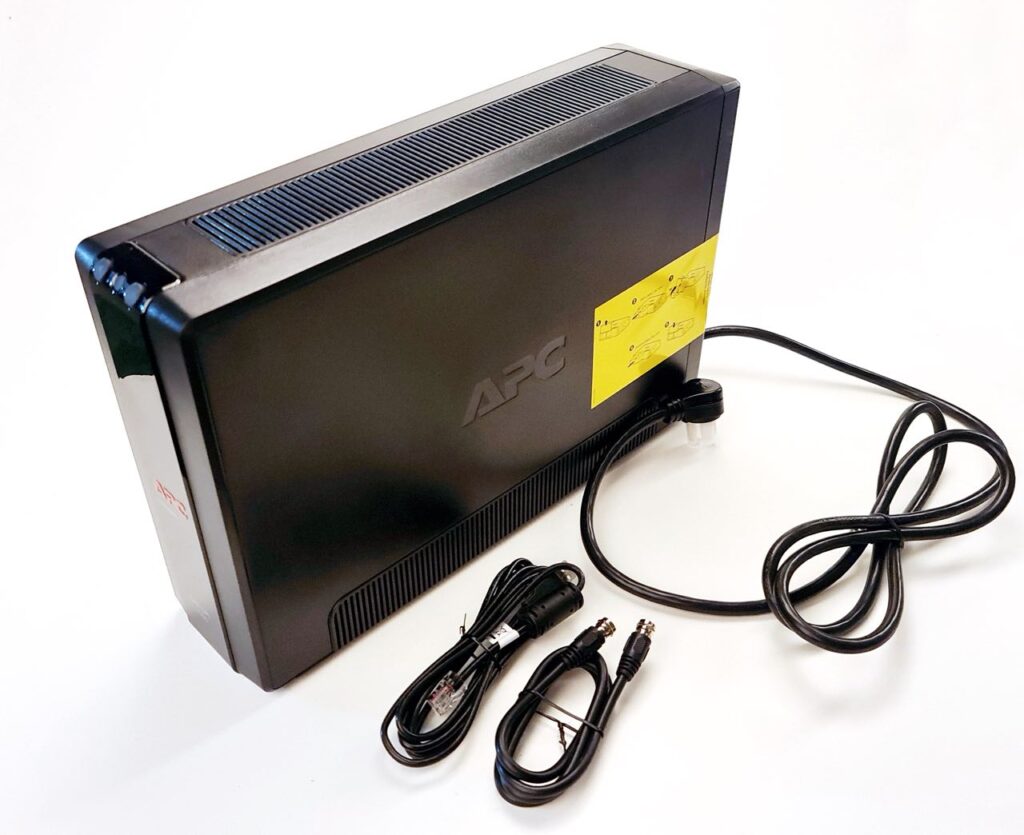
- - An uninterruptible power supply should be part of your device mix
- - A bigger model gives you more runtime during a power outage
- - Being able to monitor what's happening with the power coming to your device is important
Above: Unconnected to a load, the UPS registers a ten-hour capacity. The greater the power draw, the faster the battery will drain, but being able to monitor and balance loads against runtime is an important feature. Photos by Mark Lyndersay.
Originally published in Newsday BusinessDay for November 11, 2021
It’s possible that you don’t have an uninterruptible power supply (UPS) in your mix of computing equipment and devices at your home office or remote school space.
A UPS is a box with a big battery in it and circuitry that regulates the power from your wall socket, providing a power buffer during power failures or brown outs.
While deploying my fourth unit, I documented the steps for potential users who might be interested in adding a unit to their workspace.
Over the years, the codename for the top of the line consumer APC UPS has ch’anged. Its currently the tongue-twistingly named BX1500M-LM60, but the structure of the device hasn’t changed much in the ten years since I bought my first unit.
The 1500M is the biggest consumer grade UPS that Schneider Electric offers under the APC brand, and it’s a heavy unit.
Much of that weight is the result of a double battery system, two standard lead-acid batteries joined by a sled and held together by big adhesive labels.
The device ships with the batteries in backward, disconnected from the onboard system and you’ll have to slide out a very tightly fitted bay door to get access to the battery bundle.
Once inserted, it’s wisest to power it on, unconnected to a load, for 24 hours to ensure that the battery gets a full charge.

Since getting my first 1500va unit, I’ve never wavered in my commitment to setting aside cash to buy nearer the top of the line of these units.
The first UPS was set to provide protected power to a mission-critical workstation tower that pulls a truly absurd amount of power. It’s the only thing plugged into the battery plugs of that unit and in an outage, gives me roughly 15 minutes of time to shut down the computer.
These big power boxes give you abundant power ports, five that run off the battery, five that are surge protected, an ethernet network surge port (one in, one out), a coaxial cable surge port (ditto, for a cable modem).
Other useful features are a wiring fault indicator, which lights up to let you know that you need an electrician to look at your wiring and a monitoring port that you connect with a supplied cable to a USB port on your computer.
On Windows, you will need to download APC’s free PowerChute software to configure the UPS, including automated shutdown times for extended outages.
The MacOS has the feature built into its Energy Saver system pane.
Once you’ve plugged everything in, you won’t be spending much time dealing with the back of the unit, but be sure to plug it directly into a wall socket.
On the front panel of the unit, you’ll find a useful set of indicators.
Take note of the battery charge, which should read full after a 24-hour charge and the load capacity, which gives you an idea of how much power will be pulled from the battery in a switch-over event.
By pressing the menu button, you can cycle through other useful readouts. The Load reading tells you how many watts of power are being pulled through the unit.
The UPS will also let you know if you’ve plugged too many devices into it, if its regulating uneven voltage and most important, if it has switched to the battery.
The warning can be superfluous. With no electricity lights will go dark, so I turn off the audible warning, because working with that symphony of beeps is annoying.

There’s a unit dedicated to internet connectivity in my office that registers a load of 14w and a runtime of 237 minutes with just the cable modem and router connected to it.
Add an i9 powered MacBook Pro to the UPS and the load jumps to 38w with a runtime of 167 minutes. My oldest, most tasked unit has registered 50 events, or switchovers to battery power. Load and sensitivity to power dips play a part in event triggering
In my experience, the boxes run for years if they are kept away from excessive dust (keep them off the floor if possible) and expected battery life is between two to three years before the unit begins to signal a problem with capacity.
What’s better than the BM1500M? A newer series, the BR models from APC, slopes the digital readout at an angle on the front face and adds two USB charge ports to the front of the box, which will likely prove useful in a home office environment.
According to Adesh Samlal, Customer Service Representative at Informatics Engineering Services Limited, an elite local partner for the APC line of UPS systems, the company has experienced interest in the battery backup systems from corporate clients, but sales have been lower overall during the pandemic. Massy is also a licensed supplier.
Home users have been investing in the BX1500M-LM60 under review as well as the smaller, single battery BX600L-LM and the company saw increased interest in the products in the third quarter of 2020. The BR series is available from Informatics only by order. It’s not a stock item.
According to Samlal, customers want the devices to give them runtime to save and power off their desktop computers and to keep their internet and WiFi running.

